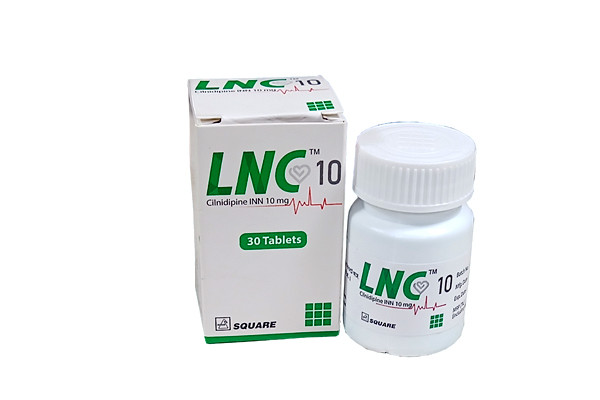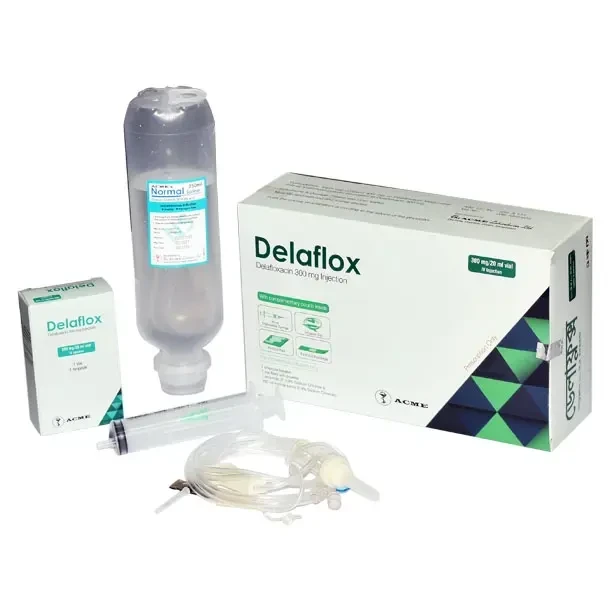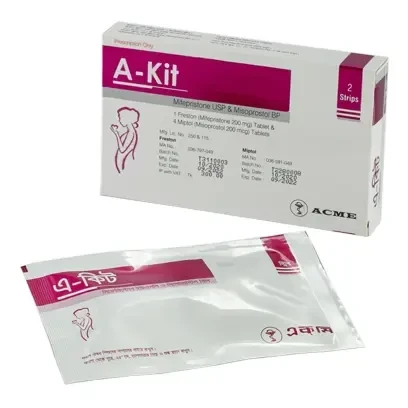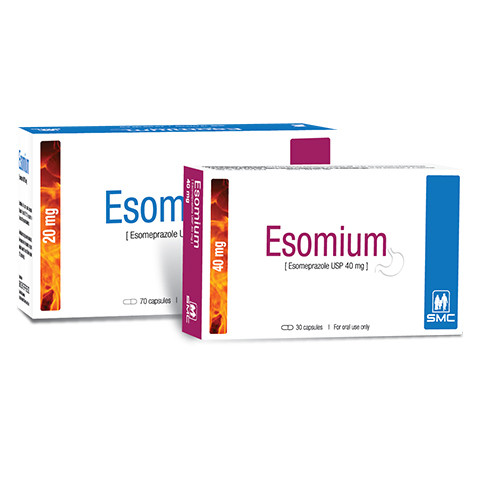

Geflox Tablet, Ciprofloxacin 500 mg
Inhouse product
-
৳11.40
৳12.00 -
৳42.75
৳45.00 -
৳16.63
৳17.50 -
৳2.14
৳2.25
Reviews & Ratings
Indications
Geflox is indicated
for the treatment of single infection or mixed infections caused by two or more
susceptible organisms. It can also be used for infections caused by organisms
resistant to other antibiotics including Aminoglycosides, Penicillins and Cephalosporins.
As antibacterial concentrations of Geflox are obtained in serum and body
tissues as well as in the urine following administration by mouth, Geflox has
been suggested for use in the treatment of a wide range of infections caused by
susceptible organisms including infections of the urinary, respiratory and
gastrointestinal tracts, gonorrhoea and septicaemia. The extensive tissue
penetration of Geflox combined with its enhanced antibacterial activity
(including antipseudomonal activity), enables Geflox to be used alone (pending
sensitivity results) or in combination with an Aminoglycoside or with beta
lactam antibiotics for instance when severe neutropenia is present or with an
antibiotic active against anaerobes where the presence of bacteroides fragilis
is suspected. Geflox is indicated for the treatment of the following infections
caused by sensitive bacteria:
- Severe systemic infections:
e.g. septicaemia, bacteraemia, peritionitis, infections in immunosuppressed
patients with haematological or solid tumors and in patients in intensive
care unit with specific problems such as infected burns.
- Respiratory tract infections:
Lobar and bronchopneumonia, acute and chronic bronchitis, acute
exacerbation of cystic fibrosis, bronchiectasis, empyema.
- Urinary tract infections:
Uncomplicated and complicated urethritis, cystitis, pyelonephritis,
prostatitis, epididymitis.
- Skin and soft tissue
infections: e.g. infected ulcers, wound infections, abscesses, cellulitis,
otitis externa, erysipelas, infected burns.
- Gastro-intestinal infections:
e.g. enteric fever, infective diarrhea.
- Infection of the biliary tract:
e.g. cholangitis, cholecystitis, empyema of the gall bladder.
- Intra abdominal infections:
e.g. peritonitis, intra abdominal abscesses.
- Bone and joint infection:
Osteomyelitis, septic arthritis.
- Pelvic infections: e.g.
salpingitis, endometritis, pelvic inflammatory diseases.
- Eye, ear, nose and throat
infections: e.g. otitis media, sinusitis, mastoiditis, tonsillitis.
- Gonorrhoea: Including urethral,
rectal and pharyngeal gonorrhoea caused by beta-lactamase producing
organisms or organisms moderately sensitive to penicillin.
* রেজিস্টার্ড চিকিৎসকের পরামর্শ মোতাবেক ঔষধ সেবন করুন'
Pharmacology
Ciprofloxacin is a
synthetic quinolone anti-infective agent. Ciprofloxacion has broad spectrum of
activity. It is active against most gram negative aerobic bacteria including
Enterobacteriaceae and Pseudomonas aeruginosa. Ciprofloxacin is also active against
gram-positive aerobic bacteria including penicillinase producing, non
penicillinase producing, and methicillin resistant staphylococci, although many
strains of streptococci are relatively resistant to the drug. The bactericidal
action of Ciprofloxacin results from interference with the enzyme DNA gyrase
needed for the synthesis of bacterial DNA. Following oral administration it is
rapidly and well absorbed from the G.I. tract. It is widely distributed into
the body tissues and fluids. The half life is about 3.5 hours. About 30% to 50%
of an oral dose of Ciprofloxacin is excreted in the urine within 24 hours as
unchanged drug and biologically active metabolites.
Dosage
General dosage
recommendations: The dosage of the Ciprofloxacin is determined by the severity
and type of infection, the sensitivity of the causative organism(s) and the
age, weight and renal function of the patient.
Adults: The dosage range for adults is 100-750 mg
twice daily.
In infections of the
lower and upper urinary tract (depending on severity): 250-500 mg twice daily.
In respiratory tract
infections: 250-500mg twice
daily for both upper and lower respiratory tract infections, depending on the
severity. For the treatment of known Streptococcus pneumonia infection, the
recommended dosage is 750 mg twice daily.
In gonorrhea: A single dose of 250 or 500 mg.
In the majority other
infections: 500-750 mg twice
daily should be administered.
Cystic fibrosis: In adults with pseudomonal infections of the
lower respiratory tract , the normal dose is 750 mg twice daily. As the
pharmacokinetics of Ciprofloxacin remain unchanged in patients with cystic
fibrosis, the low body weight of these patients would be fallen into
consideration when determining dosage.
Impaired renal
function: Dosage adjustment is
not usually required except in patients with several renal impairment. (serum
creatinine >265 micro mol/l or creatinine clearance <20 ml/minute). If
adjustment is necessary, this may be achieved by reducing the total daily dose
by half, although monitoring of drug serum levels provide the most reliable
basis for dose adjustment.
Elderly: Although higher Ciprofloxacin serum levels
are found in the elderly, no adjustment of dosage is necessary.
Adeloscents and
children: As with other drugs
in its class, Ciprofloxacin has been shown to cause arthropathy in weight
bearing joints of immature animals. Although the relevance of this to man is
unknown, its use in children, growing children and growing adolescents is not
recommended. However, where the benefit of using Ciprofloxacin is considered to
outweigh the potential risk, the dosage should be 7.5-15 mg/kg/day depending
upon the severity of infection, administered in two divided doses.
Duration of treatment: The duration of treatment depends upon the
severity of infection, clinical response and bacteriological findings.
For acute infections: The usual treatment period is 5 to 10 days
with Ciprofloxacin tablets. Generally treatment should be continued for three
days after the signs and symptoms of the infection have disappeared.
Extended-release tablet:
- In uncomplicated urinary tract
infection (acute cystitis), the recommended dose of extended-release
tablet is 1000 mg tablet once daily for three days.
For IV infusion:
- Urinary Tract
Infection: Mild to Moderate: 200 mg 12
hourly for 7-14 days; Severe or Complicated: 400 mg 12 hourly for 7-14
days
- Lower Respiratory
Tract infection: Mild to Moderate: 400 mg 12
hourly for 7-14 days; Severe or Complicated: 400 mg 8 hourly for 7-14 days
- Nosocomial Pneumonia: Mild/Moderate/Severe: 400 mg 8 hourly for 10-14 days
- Skin and Skin
Structure: Mild to Moderate: 400 mg 12
hourly for 7-14 days; Severe or Complicated: 400 mg 8 hourly for 7-14 days
- Bone and Joint
Infection: Mild to Moderate: 400 mg 12
hourly for more than 4-6 weeks; Severe/Complicated: 400 mg 8 hourly for
more than 4-6weeks
- Intraabdominal
(Acute abdomen): Complicated: 400 mg 12 hourly
for 7-14 days
- Acute Sinusitis: Mild/Moderate: 400 mg 12 hourly for 10 days
- Chronic Bacterial
Prostatitis: Mild/Moderate: 400 mg 12
hourly for 28 Days.
* রেজিস্টার্ড চিকিৎসকের পরামর্শ মোতাবেক ঔষধ সেবন করুন'
Administration
Instruction for the
use of Ciprofloxacin IV infusion-
- Check the bag for minute leaks
by squeezing the inner bag firmly. If leaks are found, or if seal is not
intact, discard the solution.
- Do not use if the solution is
cloudy or a precipitate is present.
- Do not use flexible bags in
series connections.
- Close flow control clamp of
administration set.
- Remove cover from port at
bottom of bag.
- Insert piercing pin of
administration set into port with a twisting motion until the pin is
firmly seated.
- Suspend bag from hanger.
- Squeeze and release drip
chamber to establish proper fluid level in chamber during infusion of
Ciprofloxacin IV infusion.
- Open flow control clamp to
expel air from set.Close clamp.
- Regulate rate of administration
with flow control clamp.
* রেজিস্টার্ড চিকিৎসকের পরামর্শ মোতাবেক ঔষধ সেবন করুন'
Interaction
Concurrent
administration of Geflox should be avoided with Magnesium or Aluminum
containing antacids or sucralfate or with other products containing Calcium,
Iron or Zinc. These products may be taken two hours after or six hours before
Geflox. Geflox should not be taken concurrently with milk or other dairy
products, since absorption of Geflox may be significantly reduced. Dietary
calcium is a part of a meal, however, does not significantly affect the
absorption of Geflox.
Contraindications
Patients with a
history of hypersensitivity to Ciprofloxacin or to other quinolones.
Side Effects
Gastrointestinal
disturbances e.g. nausea, diarrhoea, vomiting, dyspepsia, abdominal pain.
Disturbances of the central nervous system e.g. headache, dizziness, tiredness,
confusion, convulsion & risk of retinal detachment. Hypersensitivity
reactions e.g. skin rash (very rarely Stevens-Johnson syndrome and toxic
epidermal necrolysis), pruritus and possible systemic reactions. The other less
reported reactions are joint pain, mild photosensitivity and transient increase
in liver enzymes (particularly in patients with previous liver damage), serum
bilirubin, urea or creatinine levels. Risk of hypoglycemia & mental health
adverse effects.
Pregnancy &
Lactation
Reproduction studies
performed in mice, rats and rabbits using parenteral and oral administration
did not reveal any evidence of teratogenicity, impairment of fertility or
impairment of peri/post natal development. However as with other quinolones,
Ciprofloxacin has been shown to cause arthropathy in immature animals and
therefore its use during pregnancy is not recommended. Studies in rats have
indicated that Ciprofloxacin is secreted in milk, administration to nursing
mothers is thus not recommended.
Precautions &
Warnings
It should be used with
caution in patients with suspected or known CNS disorders such as
arteriosclerosis or epilepsy or other factors which predispose to seizures and
convulsion.
- Geflox may be taken with or
without meals and to drink fluids liberally.
- Concurrent administration of
Geflox should be avoided with magnesium / aluminium antacids, or
sucralfate or with other products containing calcium, iron and zinc. These
products may be taken two hours after or six hours before Geflox.
- Geflox should not be taken
concurrently with milk or yogurt alone, since absorption of Geflox may be
significantly reduced. Dietary calcium is a part of a meal, however, does
not significantly affect the Geflox absorption.
Use in Special
Populations
Although effective in
clinical trials, Geflox is not a drug of first choice in pediatric population.
Overdose Effects
Overdose following
Geflox administration may lead to seizures, hallucinations, confusion,
abdominal discomfort, renal and hepatic impairment as well as crystalluria,
haematuria, & reversible renal toxicity.
Therapeutic Class
4-Quinolone
preparations, Anti-diarrhoeal Antimicrobial drugs
Storage Conditions
Keep below 30°C
temperature, protected from light & moisture. Keep out of the reach of
children.
Frequently Bought Products
Square Collagen Oral Powder Collagen Peptide & Others (10 packs)
LNC Tablet Cilnidipine 10 mg
Braintel Syrup 100 ml bottle, Brahmi Rasayan
Livacol Tablet, Obeticholic Acid 5 mg
Delaflox IV Infusion 300 ml vial, Delafloxacin 300 mg/vial
Burna Cream, Silver Sulfadiazine 1%, 25 gm Tube
Product Queries (0)
Login Or Registerto submit your questions to seller
Other Questions
No none asked to seller yet
-
৳11.40
৳12.00 -
৳42.75
৳45.00 -
৳16.63
৳17.50 -
৳2.14
৳2.25

















